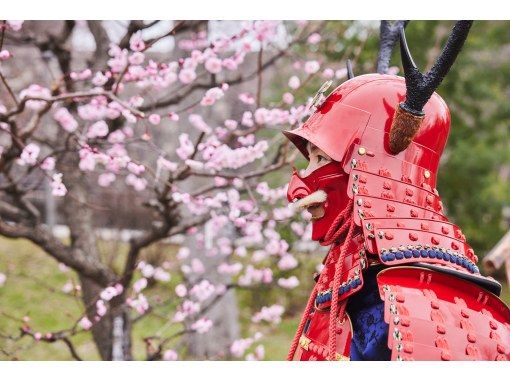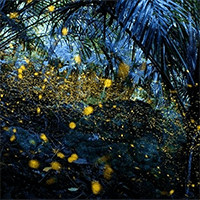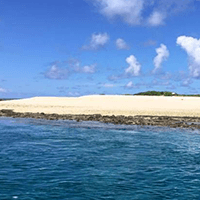Japanese Castles / Castle Ruins in Japan
- Age 6~Age 75
- 1~2 hours
- 10:00 / 11:00 / 12:00 / 13:00 / 14:00 / 15:00 / 16:00 / 17:00 / 18:00 / 19:00
Activities,1➤Learning CalligraphyResignation is literally a person's resignation from this world, or the words he writes to say goodbye to this world as he prepares to die. They are his last words,In this plan, you will write a letter of resignation to prepare for death before going to war in the Warring States Period, when life and were death always next to each other.Highlight 01➤Decide on the last character. reflect on your life and think carefully about it.➤Practice basic brush strokes and the stroke order of the chosen kanji.Activities,2One character for resignationReflecting on your life so far, imagine a story about whom and what kind of feelings you would like to leave behind, and think about the character composition (design) of your last character in this world.- Highlight 02➤With an oversized brush, more than five times larger than usual, the artist puts his soul into creating a powerful, fragile, and beautiful single character on a 150cm x 150cm sheet of paper. By expressing the whole body dynamically, the artist can freely manipulate the oversized brush.
外国のお友達をつれて一緒に参加させて頂きました。 珍しくて楽しい経験ができてとても喜んでおりました。 先生方もとてもポジティブにご指導して下さり本当に楽しかったです。 ありがとうございました。
- Age 6~Age 70
- 1~2 hours
- 11:00 / 14:00 / 17:00 / 20:00
Osaka no Jin ⚔ Pilgrimage to sacred places refers to the stages of battles such as the 1614 (Keicho 19) battle "Osaka Winter Jin" and the 1615 (Genna 1) restarted battle "Osaka Summer Jin" and other battles. It is to visit places connected to Osaka Castle as sacred places with “SAMURAI STYLE”. In addition, the term ``Japan's best soldier, who acted with great courage and speed'' in that battle was a name used to praise Sanada Nobushige (Yukimura), who was loyal to his lord, did not betray him even with money or territory, and was close to Tokugawa Ieyasu during the Summer Siege in Osaka. . Yukimura Sanada shined dazzlingly as a Sengoku military commander in the battle that concluded the Sengoku period. His vivid life still fascinates many people today, and let's make a pilgrimage to the sacred place of his glorious battle at Osaka, where he was praised as ``the greatest soldier in Japan.''
- Age 6~Age 70
- 1~2 hours
- 11:00 / 14:00 / 17:00 / 20:00
Osaka no Jin ⚔ Pilgrimage to sacred places refers to the stages of battles such as the 1614 (Keicho 19) battle "Osaka Winter Jin" and the 1615 (Genna 1) restarted battle "Osaka Summer Jin" and other battles. It is to visit places connected to Osaka Castle as sacred places with “SAMURAI STYLE”. In addition, the term ``Japan's best soldier, who acted with great courage and speed'' in that battle was a name used to praise Sanada Nobushige (Yukimura), who was loyal to his lord, did not betray him even with money or territory, and was close to Tokugawa Ieyasu during the Summer Siege in Osaka. . Yukimura Sanada shined dazzlingly as a Sengoku military commander in the battle that concluded the Sengoku period. His vivid life still fascinates many people today, and let's make a pilgrimage to the sacred place of his glorious battle at Osaka, where he was praised as ``the greatest soldier in Japan.''
- Age 10~Age 70
- 2~3 hours
- 11:00 / 14:00 / 17:00 / 20:00
Let's learn the bushido and experience the samurai spirit.What is the most important thing for a samurai? Wearing hakama, sandals, and a sword, and learning etiquette, manners, and kata. We call it the BUSHIDO sign.Next, as a BUSHIDO LEARN, you will experience the weight and sharpness of a real Japanese sword. We will learn the basics of swordsmanship (Battou and Nattou).We will take a break with SAMURAI TEA on the way. You will be entertained at a tea ceremony, as samurai risked their lives to "entertain" and "be entertained".Before participating in the final battle of the Warring States Period, the Battle of Osaka, the participants are asked to prepare for death and reflect on their own lives, writing their last words with a large brush on every piece of paper. This is called Deathbed calligraphy.At last, he puts on his armor and helmet to become a bushido master and goes to battle at the castle of Osaka to gain military merit in the battle of Osaka. However, when the defeat was imminent, the samurai, for the sake of honor, would not suffer the shame of the noose, even if they lost the battle, but would die by harakiri or cutting their belly before being captured.
- Age 10~Age 70
- 2~3 hours
- 10:00 / 14:00 / 17:00 / 20:00
One of them is Aoyamon. The gate in the square there is called Aoyamon.↓3-Gokurakubashi" as a bridge to the Paradise↓4-The place where Toyotomi Hideyori and Yododono took their lives During the Osaka Summer Battle, Toyotomi Hideyori, the lord of Osaka Castle, and his mother, Yodo-dono, committed suicide immediately after the castle fell.A monument that is believed to be the place of their suicide is located in this vicinity.↓5-Osaka Castle Main TowerOsaka Castle is the most difficult castle to attack, built by Toyotomi Hideyoshi, who aimed to unify the country.Note: Entry into the castle keep is not included.↓6-Japanese garden↓7-Sakuramon Gate↓8-South Outer Moat↓9-Hokoku ShrineThis shrine is located in front of Osaka Castle's Sakura Gate and is dedicated to Lord Toyotomi Hid↓-End point
最近チェックしたプラン
Please wait a moment
![[Osaka Castle] Samurai Calligraphy Final brushstrokes of a lifetimeの画像](https://img.activityjapan.com/10/52953/10000005295301_0NLp2Urf_3.jpg?version=1741038722)
![[Osaka/Tamatsukuri] Osaka no Jin "Hinomoto's No. 1 Soldier" pilgrimage tour guide (Tamatsukuri area)の画像](https://img.activityjapan.com/10/52625/10000005262501_xEnFGyJR_3.jpg?version=1706264164)
![[Osaka/Tennoji] Osaka no Jin "Hinomoto's No. 1 Soldier" pilgrimage tour guide (Tennoji area)の画像](https://img.activityjapan.com/10/52569/10000005256901_xEnFGyJR_3.jpg?version=1706258885)
![[OsakaCastle] Hands-on class to learn Bushido/Harakiri & Zen with photoの画像](https://img.activityjapan.com/10/52660/10000005266001_lpXgdgDW_3.jpg?version=1741684323)








